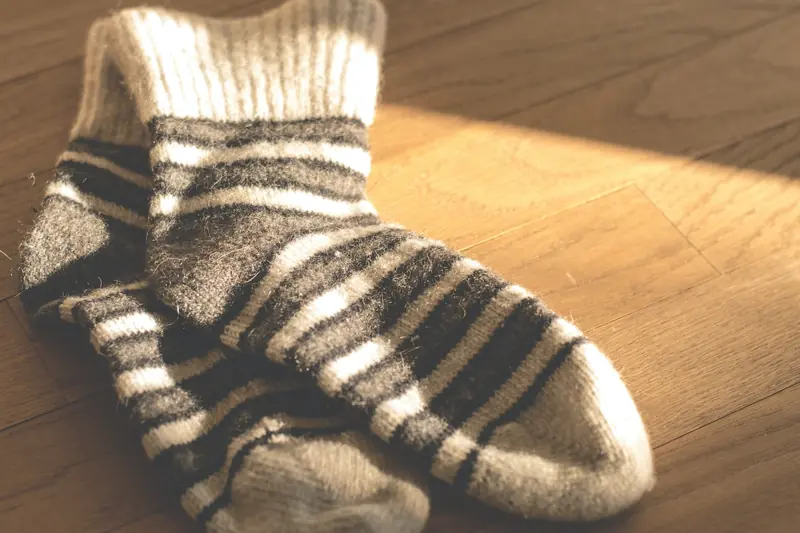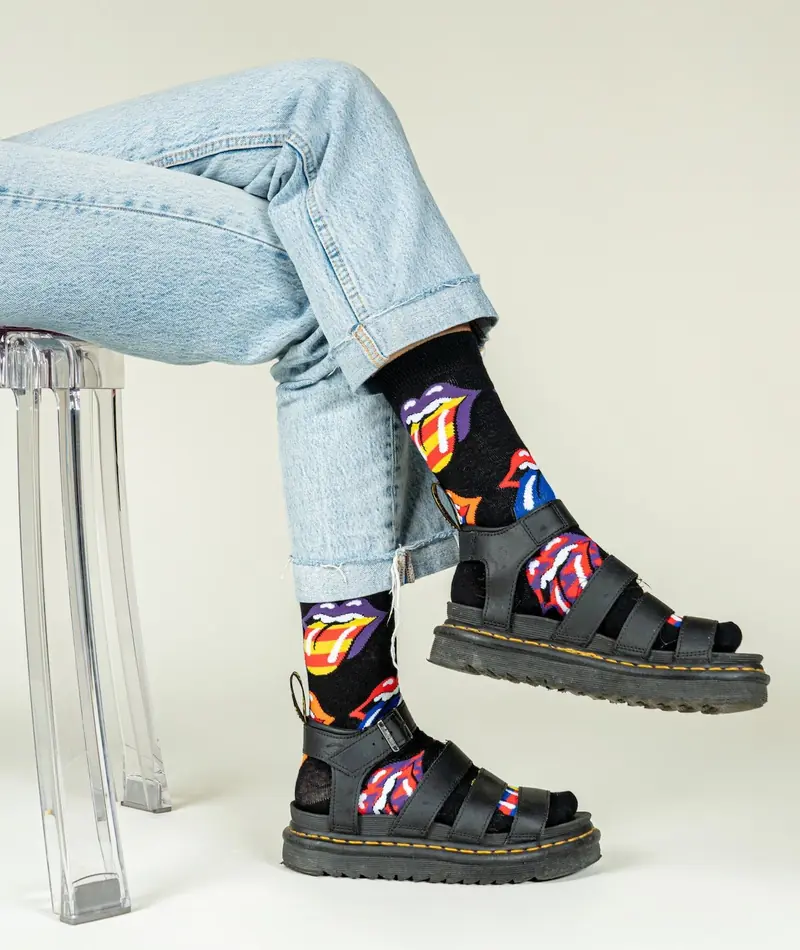
How a utilitarian item for women’s sleep became a “weapon of victory” for warriors, and why we owe advancements in the production of this essential item to a philosopher.
The Evolution of Socks
It all began with wrapping feet in hair and animal skins. Ancient Greeks covered their heels and toes with leather devices for sleeping comfort, and initially, these “insulators” were used only by women in bed. Men in Ancient Greece wore socks primarily for performances on stage.

Later, leather and linen socks appeared in Rome: they covered the calves and resembled modern knee-highs, eventually evolving into the length of stockings. By the 2nd century AD, fabric was being sewn according to patterns, attaching the sole to the side pieces. It was from the Romans that British warriors borrowed the sock design, appreciating the practicality of such a useful item in military affairs. By the 5th century, socks resembling leg wraps symbolized purity among European clergy.
Knitted socks were introduced to the world by Spain in the 16th century. Craftsmen, predominantly men, hand-made these items. Since the Middle Ages, sock design has been influenced by fashion: as pants became longer, socks became shorter, and vice versa. Before the invention of elastic thread, socks were held up with garters.

The era of mass production of knitted socks began in 1589 with the invention of the first knitting machine by William Lee, who was not a traditional engineer but a master of philosophy. This machine, created by a Cambridge graduate, produced 1,200 stitches per minute and flooded the market with affordable hosiery for all time. The significance of this event in the evolution of socks can only be compared to the invention of nylon in 1938, without which modern blended socks would be unimaginable.
Stay Dry and Warm
The most comfortable and warm socks are those made from a blended composition with a preference for natural fibers. This blend is used in the production of high-tech thermal socks, which fit snugly around the foot and provide excellent warmth. The optimal proportions are between 70% to 80% cotton or wool and 5% to 10% elastane. In high-end socks, polyamide is used instead of polyester: this material can make up 10-25% of the composition. The thin, lightweight, and durable polyamide thread extends the lifespan of socks and makes them pleasant to the touch.

Natural fibers do not cause allergic reactions, allow air circulation, and absorb moisture, while the synthetic component softens the natural threads, adds strength to the socks, speeds up drying, and preserves the color and shape of the product.
In cotton socks, the skin of the feet “breathes,” and the material does not pill. Cotton socks outperform linen in warmth and wool in durability. However, for the cold season, wool is the better choice: due to its unique balance of thermal conductivity and moisture absorption, wool socks keep feet warm without causing sweating. Warm socks are often knitted from sheep, goat, rabbit, and camel wool. For everyday use, it’s best to choose factory-made wool socks: they are thinner and more durable.

Today, socks have once again become a focal point for fashion legislators. Now, “footwear” is not hidden in shoes but showcased in all its glory. The autumn-winter trends feature elongated, bright, patterned, and casually slouched socks that fulfill their functional purpose of keeping us warm in the cold.

